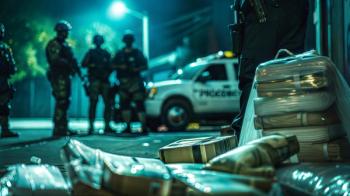
Team Tests X-Ray Laser's Power, Sees Potential
Linac Coherent Light Source (LCLS) could revolutionize the study of membrane protein complexes and virus particles.
An international team comprising more than 80 researchers has demonstrated the capabilities of the Linac Coherent Light Source (LCLS), a hard X-ray free-electron laser located in the Department of Energy’s SLAC National Accelerator Laboratory (Menlo Park, California).
In the first of two studies, the team was led by Henry Chapman of the Center for Free-Electron Laser Science at DESY (Hamburg, Germany). Researchers used the LCLS to determine the 3-D structures of proteins. To study protein crystals, traditional X-rays must emit high levels of radiation that typically damage the small crystals before sufficient data can be recorded. Larger versions of these proteins are not a viable option because they can be challenging, or even impossible, to prepare. The LCLS addresses this problem by taking “snapshots” using femtosecond pulses as tiny membrane protein crystals are sent across the brilliant beam.
The protein structure chosen for the experiment was photosystem I, one of the largest membrane protein complexes, which allows plants to convert sunlight to energy during photosynthesis. After sending millions of nanocrystals containing copies of the photosystem I protein across the LCLS beam, the team compiled more than three million “snapshots” of the protein into a three-dimensional construct.
In the second study, three colleagues from the Department of Cell and Molecular Biology at Uppsala University (Uppsala, Sweden) led a team in creating single-shot portraits of individual virus particles without damaging the samples.
The team worked with the mimivirus, the world’s largest known virus, sending hundreds of copies into the LCLS beam. The reconstructed exit wavelength produced enough data to allow the team to reconstitute the image, which showed no measurable damage. The team hopes to achieve higher resolution images by focusing brighter, shorter pulses to smaller areas.
These experiments were conducted in December 2009, just two months after the LCLS opened for research, and were published in the February 3, 2011, issue of Nature.
Newsletter
Get essential updates on the latest spectroscopy technologies, regulatory standards, and best practices—subscribe today to Spectroscopy.





